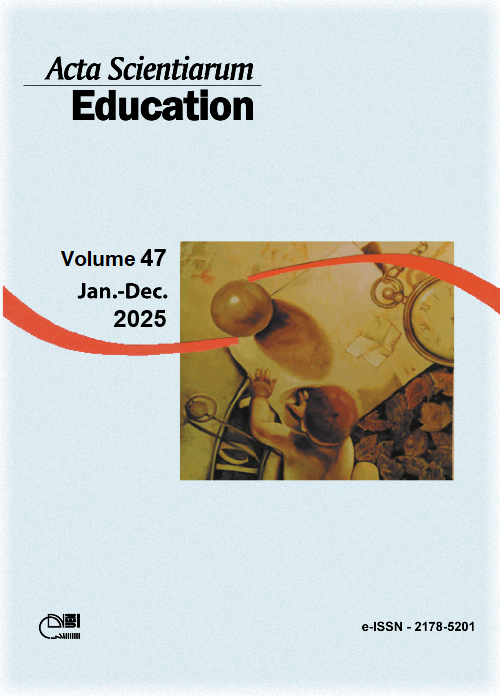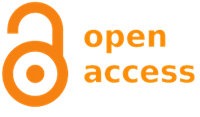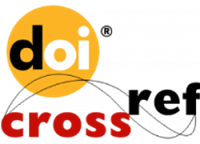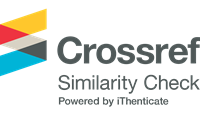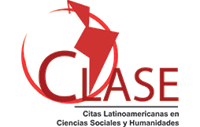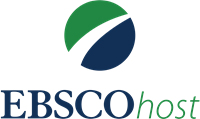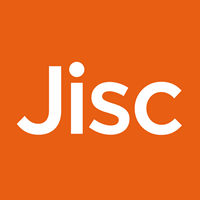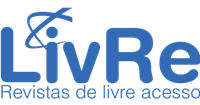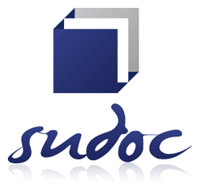The feature of art instruction combining differentiated educational practices and project based learning model
Abstract
In recent years, there has been a growing emphasis on the application of project-based learning and differentiated instruction within educational environments, as educators increasingly acknowledge their significance in motivating students and creating more interactive learning experiences. This study aims to explore the perspectives of art teachers on the effectiveness of combining differentiated instruction with project-based learning to support students’ understanding in art. Using a sequential mixed-methods design, data were collected through a questionnaire completed by 190 art teachers, followed by a group discussion involving eight selected participants. The findings reveal that art educators view project-based learning as a valuable teaching approach that promotes greater student involvement, strengthens social interaction in the classroom, encourages cultural appreciation, and supports the practical application of differentiated instruction strategies. These results have broader implications in areas such as teacher training, academic leadership, curriculum development, and educational policy. Additionally, the insights derived from this study may have relevance beyond art education, offering meaningful contributions to other academic disciplines. The findings also serve as a useful reference for researchers and educators pursuing deeper explorations into the integration of project-based learning and differentiated instruction in both art education and wider pedagogical contexts.
Downloads
References
Almeida, C. S., Miccoli, L. S., Andhini, N. F., Aranha, S., Oliveira, L. C., Bachman, L., Chick, K., Curtis, D., Peirce, B. N., Askey, D., Rubin, J., Egnatoff, D. W. J., Uhl Chamot, A., El‐Dinary, P. B., Scott, J., Marshall, G., Prensky, M., & Santa, U. F. (2016). The supplementary report to The IPCC Scientific Assessment. Revista Brasileira de Linguística Aplicada, 5(1), 1689–1699.
Al-Shehri, M. S. (2020). Effect of differentiated instruction on the achievement and development of critical thinking skills among sixth-grade science students. International Journal of Learning, Teaching and Educational Research, 19(10), 77-99. https://doi.org/https://doi.org/10.26803/IJLTER.19.10.5
Ariwibowo, B., Slamet, A., & Syamwil, R. (2018). Development of learning model of project-based learning integrated with entrepreneurship in the productive learning of motorcycle tune-up competenceitle. Journal of Vocational and Career Educations, 3(1). https://doi.org/https://doi.org/10.15294/jvce.v3i1.13424
Azmi, N., & Festiyed. (2023). Meta analysis: the influence of instrument assessment on project-based learning models to improve 4C skills. Jurnal Penelitian Pendidikan IPA, 9(4), 2184-2190. https://doi.org/10.29303/jppipa.v9i4.2606
Beier, M. E., Kim, M. H., Saterbak, A., Leautaud, V., Bishnoi, S., & Gilberto, J. M. (2019). The effect of authentic project-based learning on attitudes and career aspirations in STEM. Journal of Research in Science Teaching, 56(1), 3-23. https://doi.org/10.1002/tea.21465
Bell, D. (2016). The reality of STEM education, design and technology teachers’ perceptions: a phenomenographic study. International Journal of Technology and Design Education, 26, 61-79. https://doi.org/10.1007/s10798-015-9300-9
Bell, S. (2010). Project-based learning for the 21st century: skills for the future. The Clearing House: A Journal of Educational Strategies, Issues and Ideas, 83(2), 39-43. https://doi.org/10.1080/00098650903505415
Breslow, L. (2015). The pedagogy and pleasures of teaching a 21st‐century skill. European Journal of Education, 50(4), 420-439. https://doi.org/10.1111/ejed.12159
Brinkmann, S., & Kvale, S. (2018). Doing interviews. SAGE Publications Ltd, https://doi.org/10.4135/9781529716665
Capraro, M. M., & Jones, M. (2013). Interdisciplinary stem project-based learning. In R. M. Capraro, M. M. Capraro, & J. R. Morgan (Eds.). STEM project-based learning: an integrated science, technology, engineering, and mathematics (STEM) approach (2nd ed., pp. 51-58). Sense Publishers. https://doi.org/10.1007/978-94-6209-143-6_6
Capraro, R. M., & Slough, S. W. (2013). Why PBL? Why STEM? Why now? An introduction to STEM project-based learning: an integrated science, technology, engineering, and mathematics (STEM) Approach. In R. M. Capraro, M. M. Capraro, & J. R. Morgan (Eds.). STEM project-based learning: an integrated science, technology, engineering, and mathematics (STEM) approach (2nd ed., pp. 1-5). Sense Publishers. https://doi.org/10.1007/978-94-6209-143-6_1
Castrignanò, A., Bardini, R., Savino, A., & Di Carlo, S. (2024). A methodology combining reinforcement learning and simulation to optimize the in silico culture of epithelial sheets. Journal of Computational Science, 76, 102226. https://doi.org/https://doi.org/10.1016/j.jocs.2024.102226
Demir, S. (2021). The impact of differentiated instructional media on the motivation and opinions of students towards science learning in terms of learning styles. Shanlax International Journal of Education, 9(3), 16-25. https://doi.org/https://doi.org/10.34293/education.v9i3.3723
Descovich, M., Kannarunimit, D., & Yom, S. S. (2013). CyberKnife(r)-based SBRT for lung cancer. Clinical Insights: Stereotactic Body Radiation Therapy: Lung Cancer, 3(7), 53-72. https://doi.org/10.2217/EBO.13.11
Dewi, M. R., & Arifin, Z. (2024). Analysis of 21st century skills in the implementation of project based learning in biology learning Merdeka Curriculum. Jurnal Penelitian Pendidikan IPA, 10(4), 2118-2128. https://doi.org/10.29303/jppipa.v10i4.5941
Edmunds, J., Arshavsky, N., Glennie, E., Charles, K., & Rice, O. (2017). The relationship between project-based learning and rigor in STEM-focused high schools. The Interdisciplinary Journal of Problem-Based Learning, 11(1). https://doi.org/10.7771/1541-5015.1618
Fabros, M. G. M., Lopez, E. L. F., & Roma, M. N. (2023). Dark tourism in the Philippine context: indicators, motivations, and spectrum. Social Sciences & Humanities Open, 7(1), 100452. https://doi.org/https://doi.org/10.1016/j.ssaho.2023.100452
Fajrina, S., Lufri, L., & Ahda, Y. (2020). Science, technology, engineering, and mathematics (STEM) as a learning approach to improve 21st century skills: a review. International Journal of Online and Biomedical Engineering, 16(7), 95-104. https://doi.org/10.3991/ijoe.v16i07.14101
Fajrina, S., Lufri, L., Ahda, Y., & Alberida, H. (2023). Validity of project learning model based on STEMS to improve creativity in the 21st century (Vol. 2). Atlantis Press International BV. https://doi.org/10.2991/978-94-6463-166-1_3
Hasanah, I., Anwar, S., & Musthapa, I. (2024). A trend analysis of project-based learning in chemistry experiment : a bibliometric analysis, 10(9), 655-666. https://doi.org/10.29303/jppipa.v10i9.8642
Held, T., & Mejeh, M. (2024). Students’ motivational trajectories in vocational education: Effects of a self-regulated learning environment. Heliyon, 10(8), e29526. https://doi.org/https://doi.org/10.1016/j.heliyon.2024.e29526
Hernáiz-Pérez, M., Álvarez-Hornos, J., Badia, J. D., Giménez, J. B., Robles, Á., Ruano, V., & San-Valero, P. (2021). Contextualized project-based learning for training chemical engineers in graphic expression. Education for Chemical Engineers, 34, 57-67. https://doi.org/https://doi.org/10.1016/j.ece.2020.11.003
Hrelja, R., & Rye, T. (2024). Delivering Transit Oriented Development (TOD) in low to medium density contexts. Actor relationships and market conditions in smaller Swedish cities. International Journal of Sustainable Transportation, 18(3), 236-249. https://doi.org/https://doi.org/10.1080/15568318.2023.2285318
Ito, K. K., Tsuruoka, Y., & Kitagawa, D. (2024). Predicting potential target genes in molecular biology experiments using machine learning and multifaceted data sources. IScience, 27(3), 109309. https://doi.org/https://doi.org/10.1016/j.isci.2024.109309
Jääskä, E., Lehtinen, J., Kujala, J., & Kauppila, O. (2022). Game-based learning and students’ motivation in project management education. Project Leadership and Society, 3, 100055. https://doi.org/https://doi.org/10.1016/j.plas.2022.100055
Jacques, L. A. (2017). What does Project-based Learning (PBL) look like in the mathematics classroom? American Journal of Educational Research, 5(4), 428-433. https://doi.org/10.12691/education-5-4-11
Julita, W., & Zulyusri. (2023). Analysis of the importance of enhancing the qualifications of biology teachers as professional educators in the 21st century digital era. Journal of Digital Learning and Education, 3(2), 117-128. https://doi.org/10.52562/jdle.v3i2.744
Kenny, G. (2016). Compassion for simulation. Nurse Education in Practice, 16(1), 160-162. https://doi.org/https://doi.org/10.1016/j.nepr.2015.09.004
Kingston, S. (2018). Project based learning & student achievement: what does the research tell us? PBL Evidence Matters, 1(1), 1-11. https://eric.ed.gov/?id=ED590832
Kreher, S. A., Pavlova, I. V, & Nelms, A. (2021). An active learning intervention based on evaluating alternative hypotheses increases scientific literacy of controlled experiments in introductory biology. Journal of Microbiology & Biology Education, 22(3). https://doi.org/https://doi.org/10.1128/jmbe.00172-21
Lam, S., Cheng, R. W., & Choy, H. C. (2010). School support and teacher motivation to implement project-based learning. Learning and Instruction, 20(6), 487-497. https://doi.org/https://doi.org/10.1016/j.learninstruc.2009.07.003
Mahasneh, A. M., & Alwan, A. F. (2018). The effect of project-based learning on student teacher self-efficacy and achievement. International Journal of Instruction, 11(3), 511-524. https://doi.org/10.12973/iji.2018.11335a
Mills, M., Monk, S., Keddie, A., Renshaw, P., Christie, P., Geelan, D., & Gowlett, C. (2014). Differentiated learning: from policy to classroom. Oxford Review of Education, 40(3), 331-348. https://doi.org/https://doi.org/10.1080/03054985.2014.911725
Moreira dos Santos, E. R., Pereira, L. N., Pinto, P., & Boley, B. B. (2024). Development and validation of the new resident empowerment through Tourism Scale: RETS 2.0. Tourism Management, 104, 104915. https://doi.org/https://doi.org/10.1016/j.tourman.2024.104915
Niemiller, K. D. K., Davis, M. A., & Niemiller, M. L. (2021). Addressing ‘biodiversity naivety’ through project-based learning using iNaturalist. Journal for Nature Conservation, 64, 126070. https://doi.org/https://doi.org/10.1016/j.jnc.2021.126070
Nordahl-Pedersen, H., & Heggholmen, K. (2022). What promotes motivation and learning in project management students? Procedia Computer Science, 196, 791-799. https://doi.org/https://doi.org/10.1016/j.procs.2021.12.077
Pan, A.-J., Lai, C.-F., & Kuo, H.-C. (2023). Investigating the impact of a possibility-thinking integrated project-based learning history course on high school students’ creativity, learning motivation, and history knowledge. Thinking Skills and Creativity, 47, 101214. https://doi.org/https://doi.org/10.1016/j.tsc.2022.101214
Park, H., & Hiver, P. (2017). Profiling and tracing motivational change in project-based L2 learning. System, 67, 50-64. https://doi.org/https://doi.org/10.1016/j.system.2017.04.013
Park, J. J., Long, P., Choe, N. H., & Schallert, D. L. (2018). The contribution of self-compassion and compassion to others to students’ emotions and project commitment when experiencing conflict in group projects. International Journal of Educational Research, 88, 20-30. https://doi.org/https://doi.org/10.1016/j.ijer.2018.01.009
Platje, A., Seidel, H., & Wadman, S. (1994). Project and portfolio planning cycle: Project-based management for the multiproject challenge. International Journal of Project Management, 12(2), 100-106. https://doi.org/https://doi.org/10.1016/0263-7863(94)90016-7
Ripollés, M., & Blesa, A. (2024). The role of teaching methods and students’ learning motivation in turning an environmental mindset into entrepreneurial actions. The International Journal of Management Education, 22(2), 100961. https://doi.org/https://doi.org/10.1016/j.ijme.2024.100961
Saad, A., & Zainudin, S. (2022). A review of Project-Based Learning (PBL) and Computational Thinking (CT) in teaching and learning. Learning and Motivation, 78, 101802. https://doi.org/https://doi.org/10.1016/j.lmot.2022.101802
Siswono, T. Y. E., Hartono, S., & Kohar, A. W. (2018). Effectiveness of project based learning in statistics for lower secondary schools. Eurasian Journal of Educational Research, 75(2018), 197-212. https://doi.org/10.14689/ejer.2018.75.11
Sumarni, W., & Kadarwati, S. (2020). Ethno-stem project-based learning: its impact to critical and creative thinking skills. Indonesian Journal of Science Education, 9(1). https://doi.org/https://doi.org/10.15294/jpii.v9i1.21754
Tongco, M. D. C. (2007). Purposive sampling as a tool for informant selection. Ethnobotany Research and Applications, 5, 147-158. https://ethnobotanyjournal.org/index.php/era/article/view/126
Tsybulsky, D., & Muchnik-Rozanov, Y. (2023). The contribution of a project-based learning course, designed as a pedagogy of practice, to the development of preservice teachers’ professional identity. Teaching and Teacher Education, 124, 104020. https://doi.org/https://doi.org/10.1016/j.tate.2023.104020
Wan Husin, W. N. F., Mohamad Arsad, N., Othman, O., Halim, L., Rasul, M. S., Osman, K., & Iksan, Z. (2016). Fostering students’ 21st century skills through project oriented problem based learning (Popbl) in integrated stem education program. Asia-Pacific Forum on Science Learning and Teaching, 17(1). https://api.elsevier.com/content/abstract/scopus_id/85075401980
Warin, B., Talbi, O., Kolski, C., & Hoogstoel, F. (2016). Multi-Role Project (MRP): a new project-based learning method for STEM. IEEE Transactions on Education, 59(2), 137-146. https://doi.org/10.1109/TE.2015.2462809
Wu, T.-T., & Wu, Y.-T. (2020). Applying project-based learning and SCAMPER teaching strategies in engineering education to explore the influence of creativity on cognition, personal motivation, and personality traits. Thinking Skills and Creativity, 35, 100631. https://doi.org/https://doi.org/10.1016/j.tsc.2020.100631
Wu, X.-Y. (2024). Unveiling the dynamics of self-regulated learning in project-based learning environments. Heliyon, 10(5), e27335. https://doi.org/https://doi.org/10.1016/j.heliyon.2024.e27335
Xu, H. (2024). The role of positive learning emotions in sustaining cognitive motivation for multilingual development. System, 123, 103323. https://doi.org/https://doi.org/10.1016/j.system.2024.103323
Yu, M., Li, L., You, R., Ma, X., Zheng, C., Zhu, L., & Zhang, T. (2024). A general framework for qualitative analysis of Raman spectroscopy based on deep learning. Microchemical Journal, 199, 109990. https://doi.org/https://doi.org/10.1016/j.microc.2024.109990
Zhang, C., & Dai, K. (2024). Enhancing Chinese students’ willingness to communicate (WTC) in EMI classrooms: Do learning motivation and academic self-efficacy matter? Learning and Motivation, 87, 101997. https://doi.org/https://doi.org/10.1016/j.lmot.2024.101997
Zouganeli, E., Tyssø, V., Feng, B., Arnesen, K., & Kapetanovic, N. (2014). Project-based learning in programming classes – the effect of open project scope on student motivation and learning outcome. IFAC Proceedings Volumes, 47(3), 12232-12236. https://doi.org/https://doi.org/10.3182/20140824-6-ZA-1003.02412
Zubaidah, S., & Arsih, F. (2021). Indonesian culture as a means to study science. AIP Conference Proceedings, 2330(1). https://doi.org/10.1063/5.0043173
Zulyusri, Z., Elfira, I., Lufri, L., & Santosa, T. A. (2023). Literature study: utilization of the PjBL model in science education to improve creativity and critical thinking skills. Jurnal Penelitian Pendidikan IPA, 9(1), 133-143. https://doi.org/10.29303/jppipa.v9i1.2555
Copyright (c) 2025 Suci Fajrina, Novina Yeni Fatrina, Sandra Evhan Nisa, Eby Restudila

This work is licensed under a Creative Commons Attribution 4.0 International License.

This work is licensed under a Creative Commons Attribution 4.0 International License.
DECLARATION OF ORIGINALITY AND COPYRIGHTS
I declare that this article is original and has not been submitted for publication in any other national or international journal, either in part or in its entirety.
The copyright belongs exclusively to the authors. The licensing rights used by the journal are the Creative Commons Attribution 4.0 (CC BY 4.0) license: sharing (copying and distributing the material in any medium or format) and adaptation (remixing, transforming, and building upon the material thus licensed for any purpose, including commercial purposes) are permitted.
It is recommended that you read this link for more information on the subject: providing credits and references correctly, among other crucial details for the proper use of the licensed material.



